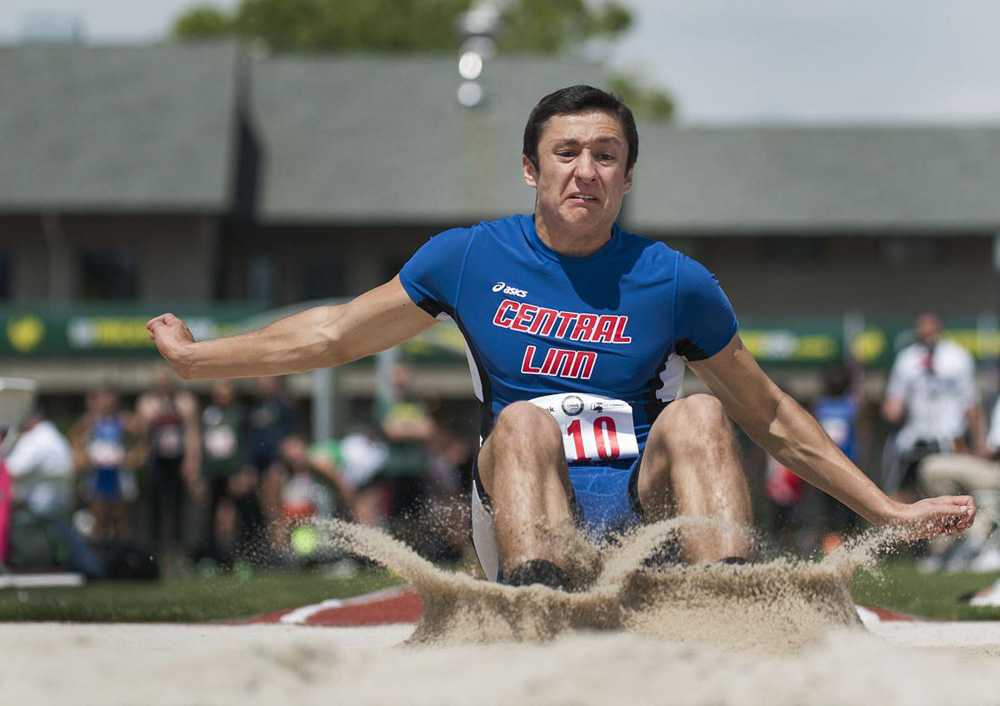
[Editor’s note: The idea behind “Alphabet Stories” is to write one noteworthy athletics-related story about each OSAA-member school. We started with Adrian HS on Sept.18. Today’s story, more three months later, is about Central Linn HS. The goal will be to write two per week. While we will be relying upon athletic directors to furnish story ideas, anyone may offer suggestions by emailing johnt@osaa.org]
There is a school nestled between Eugene and Corvallis that is home to an OSAA track & field dynasty.
Central Linn HS has won 16 all-time team state championships, trailing only Summit, which has 17. The Cobra boys have won 12 team titles on their own. Only Medford, with 14, has more. Central Linn has had 90 separate athletes win individual state championships.
The dynasty began in the late 1960s, when Tinker Hatfield, now of Nike fame, won 10 individual and relay championships over three years and helped Central Linn capture three consecutive team titles. As a senior, he won the pole vault, low hurdles and high hurdles and was part of the winning sprint relay, becoming the first athlete in Oregon history to score 40 points in a state championship meet.
More recently, the Central Linn boys claimed five straight team titles from 2011 through 2015.
They did so even though their home track has been condemned since 2005!
“We have not been able to run meets on it because of unsafe conditions,” said athletic director Mike Day, who was the track head coach during the winning streak.
Day started coaching middle school track athletes in the mid-2000s. He said that the coaches and athletes alike decided that the cracks on the track would not crack their resolve.
“We just persevered,” Day said. “The attitude we had is to make the best with what we had. Our kids were tough and did not want to get beat at any level.”
Track participation exploded at Central Linn when Day, who was teaching physical education at the middle and high school levels, introduced a track & field unit.
“When I started as a middle school coach, I had about a dozen kids,” Day explained. “We would go to meets and see other teams with 30-40 athletes. To me, track was a numbers game.”
By the time Day was asked to take over the high school track program in 2010, half of the middle school was participating.
“I had built a great feeder program,” he said. “We had speed, throwers, and distance runners. Our league used to joke around about Central Linn's stable of sprinters, which was something we did have. I had kids that ran mid 11's in the 100m and couldn’t crack the varsity lineup.”
The state titles came even though Central Linn athletes had no useable, complete track oval.
“As for the track, we just kept going, using the sections of the track that were runnable,” Day said. “We used the football field to do a lot of our speed workouts. We had one turn that had no cracks and the surface was okay so we would do a lot of our handoffs there for relays.”
For years now, Central Linn has been working to get its track replaced. The school started a “Replace the Track” fund with money Hatfield donated, but it’s not enough. Just the foundation alone is estimated to cost $800,000. The school district has twice failed to pass a bond with funds for the track included.
Said Day: “We were told by a former board member, ‘If you keep winning state championships without a track why do you need one?’ It’s been heartbreaking for these kids.”
Troy Harkins, a longtime assistant, took over the track program last year when Day became Central Linn’s athletic director. He stressed the difficulty of maintaining a successful program without a sound track to run on.
“The biggest challenges are getting technical work in (block work, jump drills, etc.),” he said. “Having no real surface hurts spike work also. The other real major problem is keeping the kids healthy. Shin splints are a huge issue. Trying to balance big workouts and keeping injuries down is a huge problem.”
“With a facility we could actually host meets,” Harkins continued. “This would really excite the kids, which, in turn, would bring out more kids to give it a try. I believe, having a facility, the workouts would be so much better and the injuries would be far less. We could also keep some of the kids that transfer to other schools. We have lost some really good athletes because of this.”










